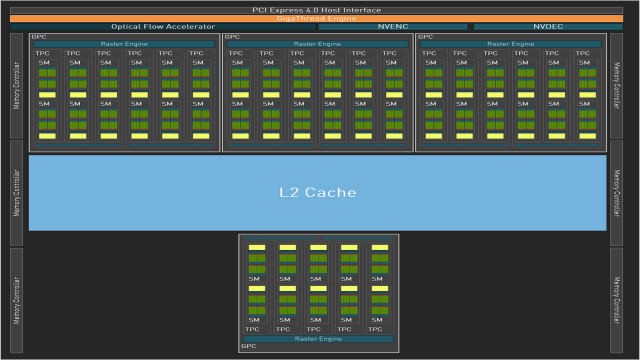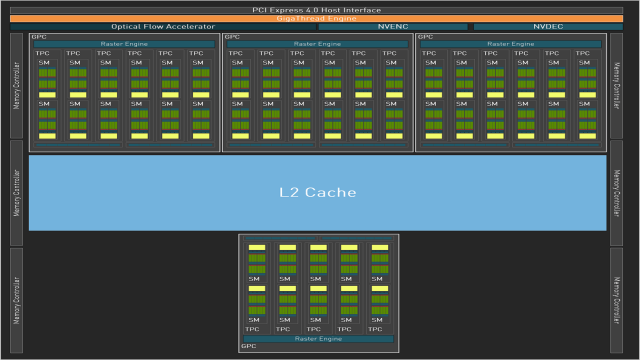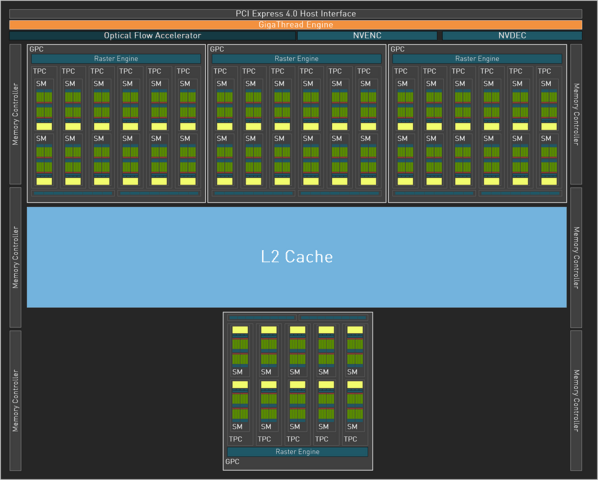In this eagerly-awaited Nvidia GeForce RTX 4070 FE test, we explore its impressive features and performance. Priced at 659 euros, this graphics card aims to provide RTX 3080-level performance with improved efficiency. ComputerBase puts the Founders Edition to the test, comparing it not only to the RTX 4070 Ti but also to the RTX 3080 and RX 6800 XT. Let’s dive into the details!
A slower RTX 4070 Ti for 659 euros
For those looking to purchase a current Nvidia graphics card, the minimum price is typically 899 euros, and it is unlikely to find a lower price in stores. To address this issue, Nvidia is releasing another model that brings the current generation Ada Lovelace to the mid-range market. Enter the GeForce RTX 4070, available from April 13th for a suggested retail price of 659 euros.
This graphics card is based on the GeForce RTX 4070 Ti (tested). Many aspects remain the same, including the AD104 GPU, 12 GB VRAM, and a memory speed of 21 Gbps. The only differences lie in the number of execution units, GPU clock speed, and maximum power consumption. Despite these reductions, Nvidia claims that the performance of the GeForce RTX 4070 is roughly equivalent to that of the GeForce RTX 3080.
Testing with Nvidia’s Founders Edition
But does it live up to expectations? ComputerBase will find out by testing the Nvidia GeForce RTX 4070 Founders Edition. In this comparison, the graphics card will face not only its larger sibling, the GeForce RTX 4070 Ti, but also the older models GeForce RTX 3080 and Radeon RX 6800 XT. Unfortunately, AMD does not currently offer a direct competitor to the GeForce RTX 4070.
The technology behind the RTX 4070 in detail
The GeForce RTX 4070, like the GeForce RTX 4070 Ti, is based on the 35.8 billion transistors and 295 mm² AD104 GPU. However, the number of execution units has been significantly reduced compared to the larger model. Instead of 60 streaming multiprocessors and 7,680 FP32-ALUs, the GeForce RTX 4070 has 46 SMs with 5,888 ALUs active. This translates to a 23 percent reduction in computing power at the same clock speed, making it the most significant difference between the two graphics cards.
Apart from these changes, Nvidia has made few alterations. The manufacturer specifies the base clock at 1,920 MHz and the boost clock at 2,475 MHz. These numbers represent a further 5 percent reduction in clock speed on top of the 23 percent decrease in computing power for the GeForce RTX 4070. However, official clock speed specifications have limited significance for modern graphics cards, if any at all.
No differences in the memory system
Unlike the execution units, Nvidia has left the memory system untouched. The GeForce RTX 4070 also features a 12 GB GDDR6X memory operating at 21 Gbps and connected via a 192-bit interface. The memory bandwidth remains the same between both graphics cards. However, the L2 cache has been reduced from 49,152 KB to 36,864 KB. Consequently, the GeForce RTX 4070 may need to access the GDDR6X memory more frequently than its larger counterpart.
The GeForce RTX 4070 has significantly reduced computing power compared to the GeForce RTX 4070 Ti. However, this also results in a noticeable reduction in power consumption, limiting the new graphics card to a maximum of 200 watts. To power it, a 12VHPWR connector according to the PCIe 5.0 standard is required, or alternatively, an adapter with two 8-pin power connectors.
The GeForce RTX 4070 Founders Edition in detail
Unlike the GeForce RTX 4070 Ti, the GeForce RTX 4070 will be available as a Founders Edition. This model shares the design with the GeForce RTX 4080 and RTX 4090 FE, albeit in a smaller form factor. Nvidia is pricing this model at 650 euros, and it will be exclusively available in Germany through Notebooksbilliger.
With a length of just 24.5 cm, a height of 11 cm, a width of two slots, and a weight of 1,019 g, the GeForce RTX 4070 Founders Edition is a true dwarf in the RTX 4000 portfolio. In contrast, the GeForce RTX 4080 FE is twice as heavy and significantly larger. However, apart from these differences, both models (unlike their respective RTX 3000 counterparts) share the same cooling concept.
Everything is smaller, yet somehow the same
The GeForce RTX 4070 Founders Edition also features two axial fans, one on the front and one on the back. However, the fan diameter is substantially smaller at 90 mm. The fan behavior remains unchanged. Upon system startup, the fans spin for a short period before coming to a stop. Even after prolonged usage, it takes some time for the fans to reach total silence. Unfortunately, the rear fan of the small model also exhibits annoying resonance – but more on that later. Additionally, the graphics card features a copper block above the GPU, four heat pipes, an aluminum block, and numerous aluminum fins.
The larger cards set the example, and the GeForce RTX 4070 FE follows suit. We are referring to the 16-pin power connector, 12VHPWR, which is integrated into Nvidia’s latest Ada Lovelace addition. For users unable to utilize the power connector, a 2×8-pin power adapter is included in the box. The Founders Edition is capable of consuming a maximum of 200 watts, with a manually adjustable limit of 220 watts.
Nvidia’s GeForce RTX 4070 FE operates at the reference clock speeds. The base clock is set at 1,920 MHz, with an average boost clock of 2,475 MHz. Monitors can be connected via three DisplayPorts 1.4 with DSC and one HDMI 2.1 port. However, there is no lighting of any kind on the small Founders Edition.
Test system and methodology
For AMD’s and Nvidia’s new high-end graphics cards, ComputerBase has revamped its testing setup, focusing on the most demanding requirements. However, slower models are overwhelmed by this new test setup. Consequently, the editorial team is currently overhauling the entire testing process, which will take some time to complete.
The “old” testing setup is not suitable for the GeForce RTX 4070, and the new setup is not yet ready. Therefore, an interim solution is used for this test: the new test setup with partially reduced graphics settings is used for benchmarks, while measurements of noise levels, temperatures, and power consumption are based on the old setup. Although this is not ideal, no alternative solution is currently available.
ComputerBase is working diligently on the new testing setup, which includes a complete overhaul and renewal of the test system, benchmarks, and other measurements. Once this setup is ready, it will feature current and some older graphics cards in the latest games with adjusted graphics options. The new test setup will be presented in a separate article.
The new test system
The new test system features an AMD Ryzen 9 7950X3D processor (factory settings) paired with an Asus Crosshair X670E Hero motherboard (BIOS 0925). The CPU has 32 GB of memory (2×16 GB DDR5-6000, 32-32-32-61). Windows 11 version 22H2, including all available updates, is installed on an NVMe SSD (PCIe 4.0). Resizable BAR, Core Isolation (VBS), and Memory Integrity (HVCI) are enabled for all graphics cards. The test system is powered by the Asus ROG Thor Platinum II with 1,200 watts, which features a 12VHPWR connector indicating its capability to supply 600 watts. If the graphics card supports such a connector, it is utilized accordingly.
The test setup uses the Fractal Design Torrent case, which prioritizes maximum airflow. The factory-installed fans are used in the case, with significantly reduced fan speeds. Further details regarding this and the test system overall can be found in the table below.
All Radeon graphics cards were tested with the Adrenalin 23.3.1 driver, while the GeForce models used the GeForce 531.29 driver. The GeForce RTX 4070 was tested with a specially adapted driver, the GeForce 531.42.
(*) Affiliate links are marked with an asterisk. When ordering through such a link, ComputerBase receives a share of the sales revenue without increasing the price for the customer.




